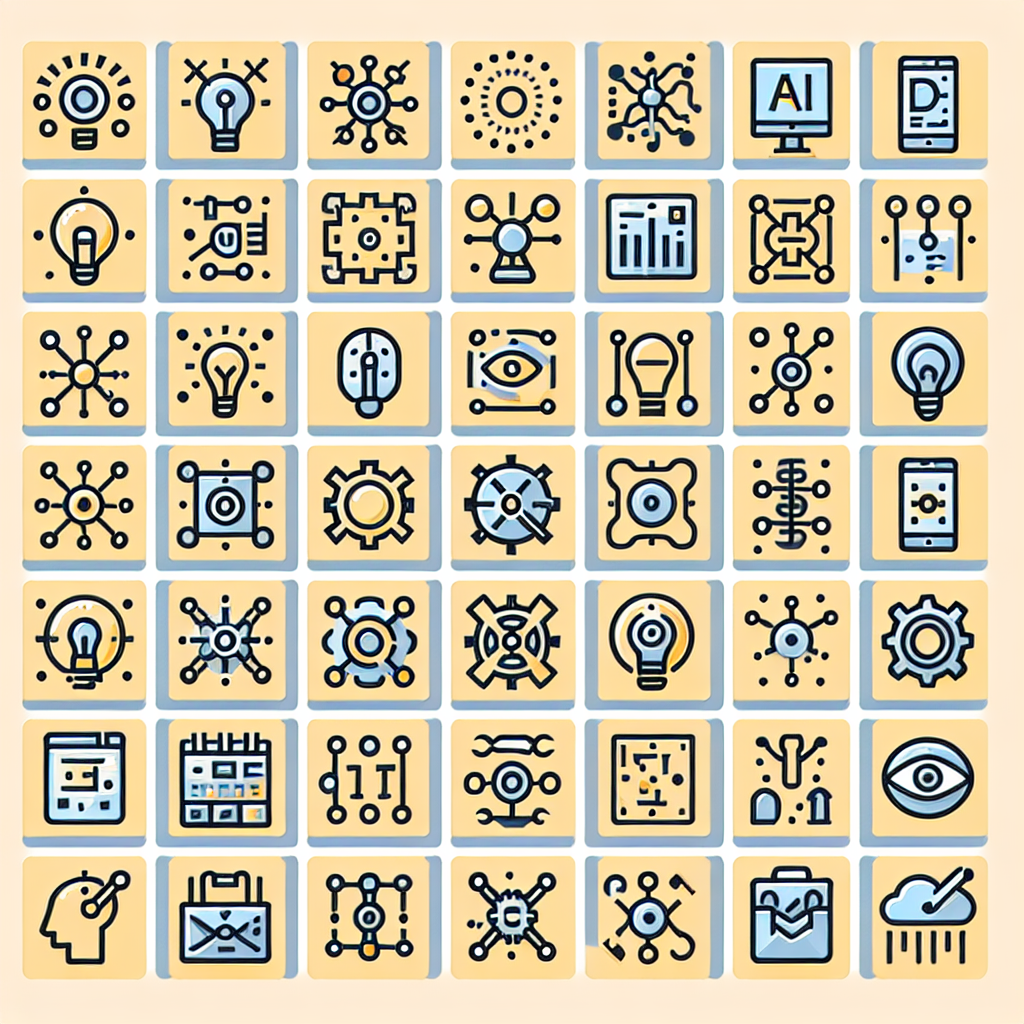Exploring the Frontier of AI: Unveiling the Tools Shaping the Creative and Professional Worlds
AI technology is ever-evolving, stretching its influence from the realms of research into practical, day-to-day applications that enhance our lives. The underbelly of the AI landscape brims with tools, remaining obscured from the public eye, that are poised to revolutionize creativity and efficiency in personal and professional settings.
The Rise of AI in Creative Expression
Creative blocks can be the bane of any artist's existence. Whether you're a writer grappling with finding the right words, a musician in search of the perfect rhyme, or a graphic designer seeking a fresh perspective, AI tools are emerging as a vital companion in the creative process.
One such tool of note is Text Effects, a new AI experiment by Google AI, which uses the Palm 2 large language model to spin webs of creative text from simple prompts. This tool is not just about providing synonyms or related words; it injects depth and artistry into the phrases it generates. Imagine a simple word like "bookshelf," transformed into "a treasure chest full of untold stories waiting to be discovered." These poetic flourishes can ignite the creative spark that artists often pursue.
Text effects encompass a suite of functionalities, from 'Explode,' which is a godsend for lyricists in its ability to deconstruct words into similar-sounding phrases, to 'POV,' which offers diverse perspectives on a given prompt, potentially fuelling creative writing or even social media content. The array of tools available can accommodate different creative needs and could become indispensable for artists, writers, and social media influencers.
AI and the No-Code Revolution
Beyond the bounds of creativity, AI has also paved the way for no-code platforms, which drastically reduce the barrier to app development. Software is one such platform, transforming Google Sheets or Airtable databases into fully functional apps without a single line of code. This democratization of app development is a game-changer, making the process accessible to anyone with an idea, regardless of technical ability.
Software's AI capabilities extend to content generation, theme development, and image creation, suggesting a future where even complex app development tasks could be offloaded to AI, raising questions about the evolving roles of web developers and UX/UI designers.
Novelty in Gift Giving with AI
When it comes to personalization and thoughtfulness in gift-giving, Dream Gift, an AI-powered tool, merits mention. By asking a few simple questions, it tailors gift suggestions to the interests and age of the intended recipient, offering novel and often unexpected options that reflect the thought and care put into the selection process.
AI-Powered Search and Development Aid
Find, an AI-powered search engine, stands as a testament to the capabilities of AI in enriching the search experience. With its adeptness at handling complex queries, it serves not only as a tool for deeper insights but also as an aid for programmers. It's when Find elaborates on steps within coding instructions, or provides nuanced answers to intricate questions that its full potential is realized, suggesting a future where AI could act as a universal facilitator for information retrieval and problem-solving.
Transforming Job Applications with Resi AI
The arduous task of resume creation is being redefined by Resi AI. By intelligently tailoring resumes and cover letters to specific job descriptions and utilizing language that resonates with employers, Resi AI is setting a new standard for job application preparation. This tool evidences the deepening integration of AI in personal career advancement, offering a solution that streamlines the resume creation process while enhancing an applicant's chances of securing their desired role.
AI Breathes Life into History
Deep Nostalgia, an AI tool by MyHeritage, serves as a poignant example of the emotional impact AI can have. By animating old photographs, this tool bridges the gap between the past and present, allowing users to witness a smile or a glance from a loved one who is no longer with us. Such applications of AI extend beyond mere utility and touch upon the human desire to connect with our history on a deeper level.
In conclusion, the burgeoning landscape of AI tools is rich with innovation, from creative aids like Text Effects to practical solutions like Software and Resi AI. These tools exemplify the transformative impact AI is having across various facets of life, enhancing creativity, simplifying workflows, personalizing experiences, and even providing emotional connections to the past.
The limitless potential of AI is evident, and as these tools evolve, they promise to bring about changes that were once the preserve of science fiction. With every advancement, AI cements itself as a cornerstone of modern society, a silent partner that amplifies our abilities and enriches our lives in myriad ways. As we stand on the brink of this AI renaissance, the question that remains is not if, but how we will harness these tools to shape the future.
For those keen to dive deeper into the transformative power of AI across industries and creative spheres, additional resources are available on websites such as Google AI Blog, MyHeritage Blog, and NoCode. These platforms offer comprehensive insights into the latest AI developments and their applications, shaping an informed perspective on the potential and challenges of these emergent technologies.
Related News
- Unleashing the Power of New AI Tools: A Deep Dive into Innovation
- Major AI Upgrades: A Deep Dive into the Latest Trends
- Unleashing Creativity: A Dive into the World of Advanced AI
- Unleashing Productivity: A Dive into the Latest AI Tools Revolutionizing Work and Creativity
- Unlocking the Best Free AI Tools: A Deep Dive into Limitless Creativity
